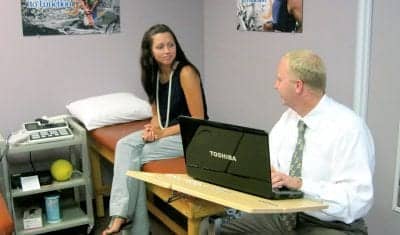With a little more than $1 billion of the $787 billion stimulus legislation devoted to comparative effectiveness (CE) research, President Obama has made it clear that he believes government should have a role in aiding patient diagnoses. But what exactly does “aiding” mean? If clinicians are increasingly paid by tax dollars through a government-run plan, will CE lead to rationing and/or mandating certain kinds of treatment?
The American Medical Association (AMA) has gone on record supporting CE research, while also making it clear that results should only lend a helping hand, and not lead to government mandates.
Recent high-profile stories on NPR and other media outlets report that both democrats and republicans are wary of using CE to “limit coverage or reimbursements.” Despite the reassurances, many clinicians from across the health care continuum have strong opinions. Some fear government-generated data will inevitably lead to rationed medical care that could restrict options, while others see a harmless, and ultimately beneficial, contribution to the medical body of knowledge.
The slippery slope argument is an integral concept on both sides of the debate, with proponents saying that rationing scenarios can be avoided with a thoughtful approach. Kenneth Hosack, director of provider relations at Craig Hospital, says he believes evidence-based medical treatment guidelines and transparency could reduce the variability of practice in medicine, and improve overall care.In a statement, From his Denver-based office at Craig, a spinal cord and brain injury rehab and research hospital, Hosack said in a statement that much of the grades of evidence in medicine and rehabilitation at this point in our research history is expert consensus-based, without randomized, controlled, double-blind research evidence. Therefore, guidelines should be used as guidelines, not rigid protocols or inflexible clinical pathways, he added. Guidelines should be sufficiently flexible to allow physicians and health care providers to treat individual patients with individualized care, so they can practice the art of medicine, and most effectively treat their patients, he said.
Daniel E. Andrews III, MD, who treats many uninsured farm workers on a cash basis in Napa, Calif, says he believes the CE movement will lead to an over-reliance on technology, and ultimately another layer of unwelcome red tape. Andrews routinely sends his uninsured patients to Walmart, where he says they can get generic medications for $4 a month, and $10 for 3 months. Andrews, owner of the Heart and Health Center, said in a statement that the government is really going to screw this up, and a lot of good doctors in private practice are going to close their doors. I think Obama is rushing to fix things, and it is not going to be done with technology; medical care is an art and a science—a hands-on endeavor that can’t be practiced by computer, he added.
Could long hours and too many patients boost the case for CE? Louis Tenenbaum, a contractor, consultant, and certified aging-in-place specialist (CAPS) in Potomac, Md, said he believes all of those factors should be considered. Tenenbaum blames much of the resistance on the normal human instinct to reject change. Ultimately, he says prudent adjustments can be made to CE, and health reform in general, with a new paradigm as the end result. In a statement he said that very little gets just right out of the gate, and we must have patience to see how new ideas evolve and are adjusted over time. Will there be fallout, new cracks, drama and tragedy? Of course, but there is fallout, drama, tragedy and severe unfairness now, he added. Is change hard? You bet! Is fairness part of the current system? Not much, he said.
[Source: Greg Thompson]




